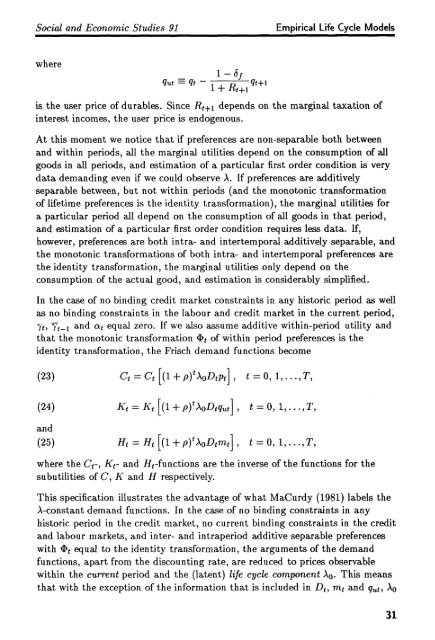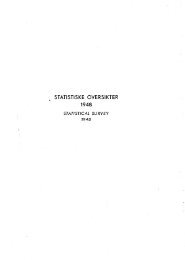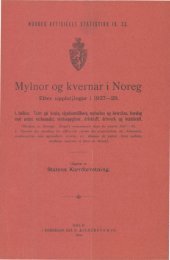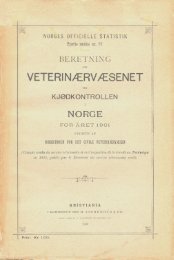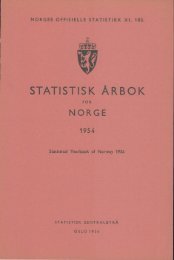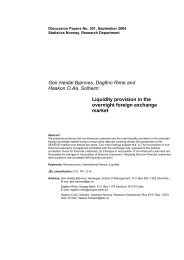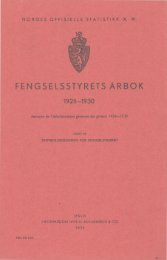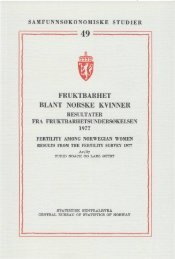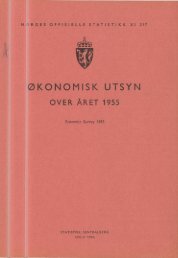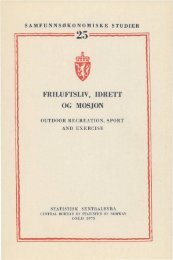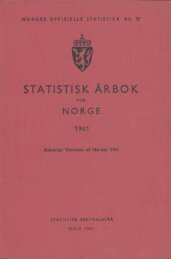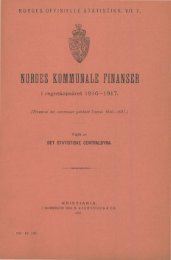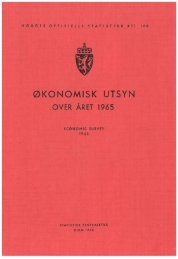Empirical life cycle models of labour supply and - Statistisk sentralbyrå
Empirical life cycle models of labour supply and - Statistisk sentralbyrå
Empirical life cycle models of labour supply and - Statistisk sentralbyrå
You also want an ePaper? Increase the reach of your titles
YUMPU automatically turns print PDFs into web optimized ePapers that Google loves.
Social <strong>and</strong> Economic Studies 91 <strong>Empirical</strong> Life Cycle Models<br />
where<br />
qt qt<br />
— f<br />
1 4-- Rt+i qt+i<br />
is the user price <strong>of</strong> durables. Since Rt+i depends on the marginal taxation <strong>of</strong><br />
interest incomes, the user price is endogenous.<br />
At this moment we notice that if preferences are non-separable both between<br />
<strong>and</strong> within period's, all the marginal utilities depend on the consumption <strong>of</strong> all<br />
goods in all periods, <strong>and</strong> estimation <strong>of</strong> a particular first order condition is very<br />
data dem<strong>and</strong>ing even if we could observe A. If preferences are additively<br />
separable between, but not within periods (<strong>and</strong> the monotonic transformation<br />
<strong>of</strong> <strong>life</strong>time preferences is the identity transformation), the marginal utilities for<br />
a particular period all depend on the consumption <strong>of</strong> all goods in that period,<br />
<strong>and</strong> estimation <strong>of</strong> a particular first order condition requires less data. If,<br />
however, preferences are both intra- <strong>and</strong> intertemporal additively separable, <strong>and</strong><br />
the monotonic transformations <strong>of</strong> both intra- <strong>and</strong> intertemporal preferences are<br />
the identity transformation, the marginal utilities only depend on the<br />
consumption <strong>of</strong> the actual good, <strong>and</strong> estimation is considerably simplified.<br />
In the case <strong>of</strong> no binding credit market constraints in any historic period as well<br />
as no binding constraints in the <strong>labour</strong> <strong>and</strong> credit market in the current period,<br />
yt , -7, 1 <strong>and</strong> at equal zero. If we also assume additive within-period utility <strong>and</strong><br />
that the monotonic transformation (1) t <strong>of</strong> within period preferences is the<br />
identity transformation, the Frisch dem<strong>and</strong> functions become<br />
(23) Ct Ct [(I -I- P) t AoDtPt] t --= 0, 1, • .•,T,<br />
(24) _Kt Kt [(I -I- P) t Àoptqut] t = 0, 1, . . . ,T ,<br />
<strong>and</strong><br />
(25) lit lit [(1 P) tAoptrnt] , t = 0, 1, . ,T ,<br />
where the Ce-, Kt- <strong>and</strong> lit-functions are the inverse <strong>of</strong> the functions for the<br />
subutilities <strong>of</strong> C, K <strong>and</strong> H respectively.<br />
This specification illustrates the advantage <strong>of</strong> what MaCurdy (1981) labels the<br />
A-constant dem<strong>and</strong> functions. In the case <strong>of</strong> no binding constraints in any<br />
historic period in the credit market, no current binding constraints in the credit<br />
<strong>and</strong> <strong>labour</strong> markets, <strong>and</strong> inter- <strong>and</strong> intraperiod additive separable preferences<br />
with 4:1)t equal to the identity transformation, the arguments <strong>of</strong> the dem<strong>and</strong><br />
functions, apart from the discounting rate, are reduced to prices observable<br />
within the current period <strong>and</strong> the (latent) <strong>life</strong> <strong>cycle</strong> component Ao. This means<br />
that with the exception <strong>of</strong> the information that is included in Dt , mt <strong>and</strong> qut , Äo<br />
31


